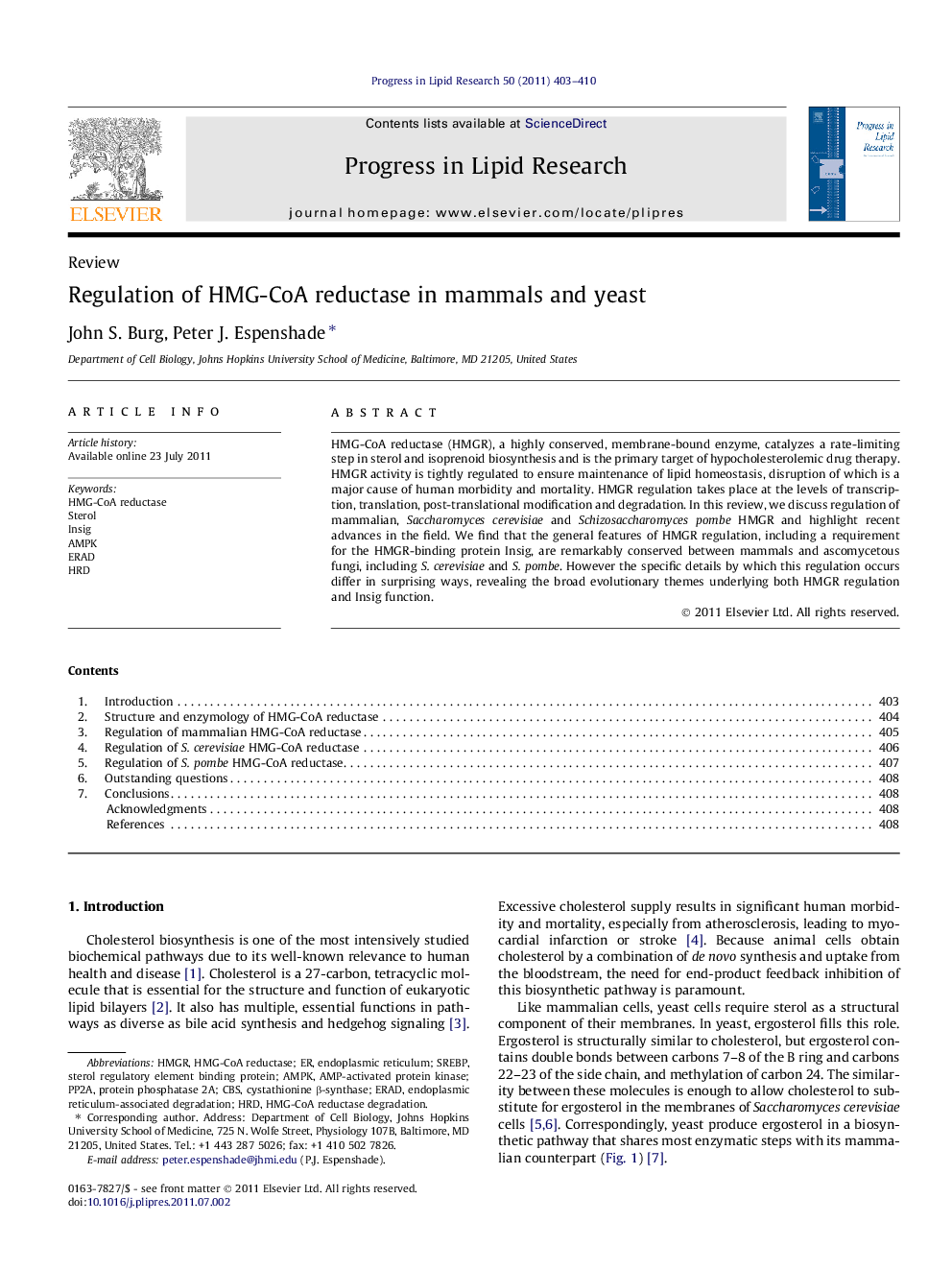| Article ID | Journal | Published Year | Pages | File Type |
|---|---|---|---|---|
| 2019163 | Progress in Lipid Research | 2011 | 8 Pages |
HMG-CoA reductase (HMGR), a highly conserved, membrane-bound enzyme, catalyzes a rate-limiting step in sterol and isoprenoid biosynthesis and is the primary target of hypocholesterolemic drug therapy. HMGR activity is tightly regulated to ensure maintenance of lipid homeostasis, disruption of which is a major cause of human morbidity and mortality. HMGR regulation takes place at the levels of transcription, translation, post-translational modification and degradation. In this review, we discuss regulation of mammalian, Saccharomyces cerevisiae and Schizosaccharomyces pombe HMGR and highlight recent advances in the field. We find that the general features of HMGR regulation, including a requirement for the HMGR-binding protein Insig, are remarkably conserved between mammals and ascomycetous fungi, including S. cerevisiae and S. pombe. However the specific details by which this regulation occurs differ in surprising ways, revealing the broad evolutionary themes underlying both HMGR regulation and Insig function.
